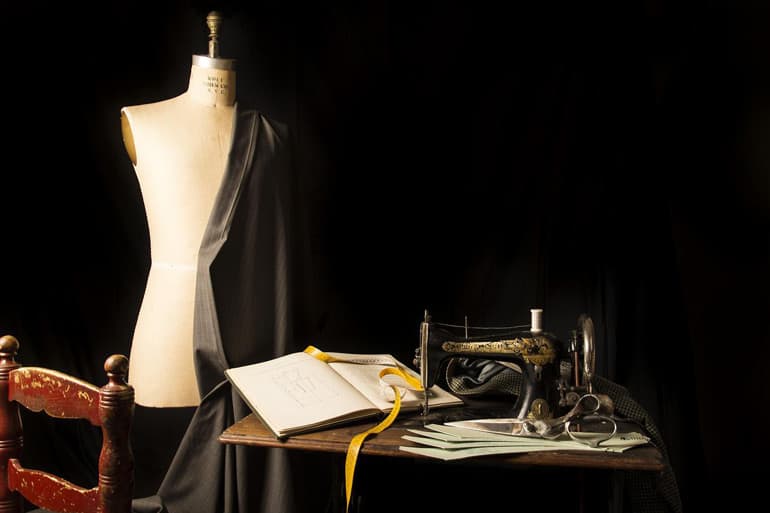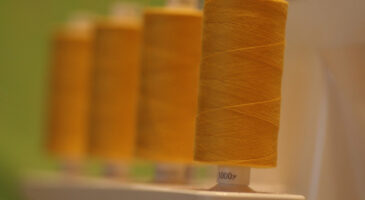It is becoming somewhat of a ritual for everyone to lay their bed every morning after the beddings get undone due to the intense snugging, twisting, and turning they were exposed to overnight.
Even though this is becoming like an everyday chore and almost becoming a part of our daily life, you cannot deny the fact that it can be stressful and time-consuming sometimes. And this is what has led to the emergence of fitted sheets.

Fitted sheets are designed to fit perfectly well into your bed while eliminating the bottleneck of continuously tucking in flat sheets and also provide you with comfort. Unfortunately, making fitted sheets is not as easy as using them, and that is why I have set out in this article to teach people how to sew fitted sheets. The process is very simple; just make sure to read carefully.
What are fitted sheets?
Fitted sheets are rectangular-shaped sheets designed with elastic edges that serve as protection to mattresses while also making their surface comfortable enough for their users.
How do you sew fitted sheets
1. Measure the mattress
It is important to measure the actual size of your mattress because it can be difficult to work with a standard size since mattresses come in various sizes.
Measure the length, breadth, and depth of your mattress with a tape rule. The depth of the mattress should be multiplied by 2, and then add the width and add 6. This will allow at least 3 inches to be tucked beneath the mattress on each side.
Again, multiply the depth by 2, then add the length and add 6 inches which are to be tucked underneath the top and foot of the mattress.
2. Cut off the corners
Cut the exact size of fabric you need to make your sheet. To get accurate measurements, make use of a rotary cutter, a mat, and a ruler.
If the fabric you are using is standard size — 45 inches wide, cut the pieces to the exact length you will need and see them together along the length. To avoid a center seam, you can add pieces to every single side of a centerpiece.
Make sure to complete the seams to avoid unnecessary unraveling after several washes. Add the mattress depth to the 3 inches originally meant to be tucked under each side. Then cut a square equivalent to the resulting size from each fabric corner.
3. Sew the corners
Put the right sides of the edges together and pin them at the corner, then make zigzag stitches to finish the seam. You can also make French seam to give your fabric a nice finishing.
4. Press the edges
You can hem the edges of them by turning and pressing the fabric about 1/4 to the wrong flank and again in the same measurement. If you prefer to use elastic for the corners only, then you can stitch the hem to cover the sheet. But if you want the elastic for the whole sheet, then you do not have to pre-sew the hem.
5. Add elastic to the sheet
If you have a ballpoint or stretch needle, fix it into your sewing machine to prevent skipped stitches while sewing the elastic. Sew zigzag stitch to join the elastic to the corner of the fabric and allow the inner fold of the hem to overlap.
Backstitch at the beginning of the joint, and make sure to draw the elastic as you sew. Overlap the elastic when you get to the starting point and backstitch again then cut off excess elastic.
Cut 4 pieces of elastic that are at least 10 inches long if you want the elastic only at the corner of the sheet. Each piece of the elastic should be placed beneath each boxed corner on the other side of the sheet.
Stretch the end of each elastic to the limit along the sheet edges. Then join the elastic to the sheet corner with zigzag stitches, leaving the elastic in the stitched position to enable it to pull on both sides.
6. Finishing your fitted sheet
After completely attaching the elastic and it is no more stretching, it should shrink together at the edge. This will allow your sheet to remain in place when you cover your mattress with it.
What are the differences between a fitted sheet and a deep fitted sheet?
There’s no significant difference between fitted and deep fitted sheets because both provide similar comfort, only that a deep fitted sheet has more space to accommodate deep mattresses or mattresses that are used with toppers.
Can I make a fitted sheet from a flat sheet?
Yes, you can make a fitted sheet from a flat sheet.
If you use a queen-size bed, you can easily make a queen-size fitted sheet out of a queen-size flat sheet without any hassle.
How to use a flat sheet and fitted sheet
To use both flat sheet and fitted sheet, place your flat sheet between the fitted sheet and your blanket or duvet in such a way that when you are laying on your mattress, your flat sheet will be over while the fitted sheet will be under you. You can keep the flat sheet in place and tuck it in at all sides.
How much elastic is required for a fitted sheet?
How much elastic you need depends on the stretch of the elastic. But the general rule is that you will need to cut the elastic size by about half or two-thirds of the entire distance to be covered by the elastic. And you will need about 4 pieces of elastic of this size.
How to make my fitted bedsheet tighter
Hold the corners of the sheet with office pins to keep your fitted bedsheet in place without moving around. To do this, gather the corners of your pin together and pin them to make your sheet appear smaller. This is the best option if your mattress is bigger than your sheet.
What do you do if your fitted sheet is too big?
If your fitted sheet is too big for your mattress, wash them with a hot cycle in a machine and also dry them in the hot cycle in the dryer. Putting your sheet through this stress will help shrink them.



